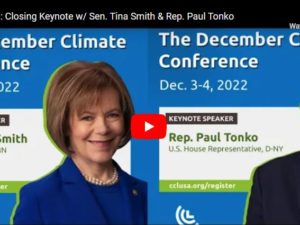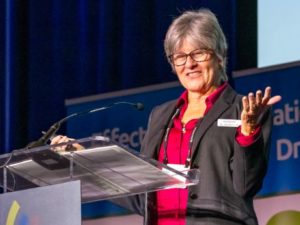
CCL’s legislative team does an in-depth analysis of our volunteers’ lobby meeting notes each year, called the June Analysis.
By Flannery Winchester
This summer, CCL volunteers held an impressive 528 meetings with congressional offices on June 12—that’s a record high for us! The meetings were focused on the Energy Innovation and Carbon Dividend Act, and our volunteers took meticulous notes. They turned in those notes to CCL’s legislative staff in D.C., who read them closely to produce the 2019 June Analysis.
Watch Adeline DeYoung, CCL’s Legislative Assistant, explain the process of creating the analysis and its results here, or read on for an overview of this year’s key findings:
https://www.youtube.com/watch?v=secRhb7R8iw?rel=0
We’re having more face-to-face meetings
In CCL’s meetings in June 2019, a representative or senator was present in 24% of the meetings. That’s almost one in four meetings where a member of Congress made time to be there. That’s a big jump from a member being present at 16% of meetings in June of 2018. “It shows that you guys are building good relationships, and your members are excited to see a bill in play,” Adeline said.
Congress is more engaged
This year, our D.C. staff tracked 77 different topics to see what came up in those hundreds of meetings. The heat map on the back of the 2019 June Analysis handout shows that lots of those topics came up more frequently than they had been in years past. For example, the topic of endorsers came up in 12% of June 2018 meetings, but it jumped up to 20% of meetings this past June.
“Having a bill out to discuss for the first time has sharpened and focused the minds of the staffers we’re engaging with,” Adeline explained. “You all have more concrete things to talk about, and they’re coming up with wider ranging questions.”
We’re ready to answer those questions
Of all the topics the analysis tracked, a few came up over and over again in our June meetings. These were the dividend, the border carbon adjustment or other countries, endorsers for H.R. 763, the Green New Deal (GND), bipartisanship, and low-income households. This chart shows how often each topic came up in each party:
Here’s a deeper dive into each of those topics. Volunteers will be able to use this information in future lobby meetings, such as those taking place next week during our 2019 November Lobby Day.
- Dividend: In June, 28% of offices asked questions about how a carbon dividend would be administered to Americans. CCL has a study on this, called the Dividend Delivery Study, available on our website. “This resource that we have is really incredible,” Adeline said. “If the office has a concern about the delivery [of the dividend], this study answers basically every question any staffer could think of related to the dividend.” It even includes ready-to-print forms designed to be compatible with existing IRS software.
- Border: Many offices also expressed concern about maintaining American competitiveness abroad. If this concern comes up in a future meeting, Adeline said, volunteers could point out that 80% of imports to the U.S. come from countries that already have some sort of carbon price in place.
- Endorsers: Many volunteers also shared news about local endorsements for the Energy Innovation Act. Congress needs to hear about support in the district, so this topic came up regularly in June. “We value Congress’ input on who we should be talking to,” Adeline said, so volunteers are also asking offices who else in their district they would like to hear from.
- Green New Deal: As a prominent topic in environmental news early this year, the Green New Deal was brought up often in congressional meetings in June. “H.R. 763 is not part of the Green New Deal, but nor are they mutually exclusive,” Adeline explained. About half of cosponsors on the Energy Innovation Act also co-sponsor that resolution, and about half do not.
- Bipartisanship: Our primary ask of all Senate offices in June and last November was to make climate a bridge issue, not a wedge issue. “Staffers were interested in that approach,” Adeline said, so that will continue to be a message volunteers can bring to their meetings.
- Low Income: “This topic came up as a concern for low-income families or a question about how they would fare” under the Energy Innovation Act, Adeline explained. Our answer for Congress? Economists expect that about two-thirds of American households will end up ahead under the Energy Innovation Act, and most of those seeing the benefits are low-income households. CCL just updated a Personal Carbon Dividend Calculator that enables people to look up how this legislation will affect them financially. Check it out!
The full 2019 June Analysis is available on CCL Community here. If you have questions for CCL’s legislative team, you can ask them in the “Lobbying” forum on CCL Community.






